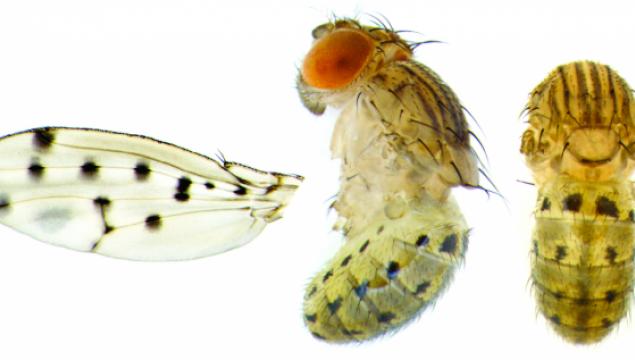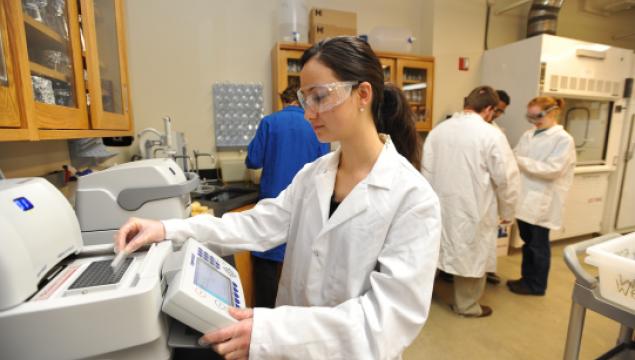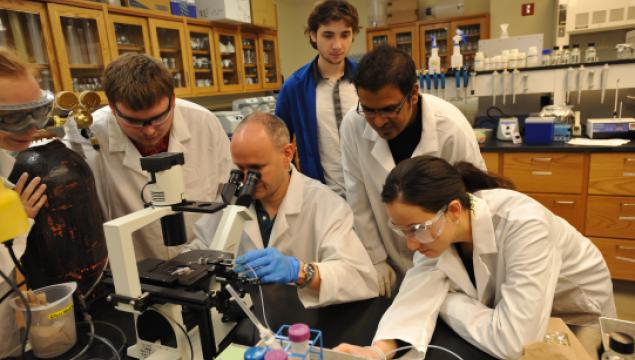Can Fruit Fly Pigmentation Patterns Help Cure Cancer?
Why This Project Is Important
Every year, more than 7 million people die from cancer worldwide. Our ultimate goal is to help developing gene-therapeutic drugs that can stop tumors from growing. This novel work will utilize fruit fly pigmentation patterns, which develop under the control of the same genes that cause cancer in humans. We chose the fruit flies as a model because they grow fast in large numbers and are amenable to a wide variety of genetic approaches.
Project Description
Cancer is caused by genes that were originally "good" genes that have turned "bad". Every organism needs these genes to develop from an egg into an adult, but when they mutate, they cause tumor development and growth. Fruit flies and humans share these genes and consequently also the cancer-causing genes. We will use fruit flies to study how cancer genes communicate with each other to form tumors. We previously discovered that one of the most notorious cancer genes (Wnt-1) in humans, which is involved in 70% of all human tumors, "paints" the black spots on the wings of the fruit fly Drosophila guttifera (see picture 2). Thus, wherever the cancer-causing gene is active, a black melanin spot will form on the wing, very similar to skin cancer that appears as black melanin spots on the human skin (Xeroderma pigmentosum). In this project, we will use black pigment spots on fruit fly bodies as a model to reveal how cancer gene communication networks function. The short-term goal of this study is to identify new genes that assist the already known cancer genes in the formation of tumors.
This knowledge will set the stage for the long-term goal, which is to develop drugs that can switch the cancer genes off or block the the communication between themselves. The objective of this proposal is to test what genes lead to the body pigment pattern of the spotted fruit fly Drosophila guttifera. We have very good reasons to believe that at least three independently acting cancer gene pathways are contributing to separate parts of the abdominal color pattern, making this fly a really exciting organism to study multiple cancer developmental pathways in parallel.
Our research questions are:
- What cancer genes are involved in the formation of pigment in this fruit fly species?
- How do the genes interact with each other (and how can we interrupt their interactions)?
- Where are the switches that turn these cancer genes on and off?
Meet the Researcher

Thomas Werner
Dr. Werner became interested in the question “What is life?” as a four-year old child in his parent’s garden in former East Germany. With the age of 10, he began to develop a life-long interest in the biology of butterflies and moths. He has been breeding and collecting them ever since. For his Master’s thesis, he decided to shift his focus to molecular biology because this was a newly emerging field of biology that promised new jobs. Thus, Dr. Thomas Werner studied the human heart disease-causing virus Coxsackie B3 at the molecular level at Friedrich-Schiller-University Jena in Germany. After the fall of the Berlin Wall, Dr. Werner made one of his childhood dreams become true and moved to Sweden. He spent seven years in Umeå, working on his Ph.D. thesis about the innate immune response in the fruit fly Drosophila melanogaster. During this time at Umeå University in Dr. Dan Hultmark’s lab, he discovered and described a new family of immune genes that we humans share with flies and many other animals. In 2005, Dr. Werner shifted his research focus towards evolution of development (evo-devo) and worked as a postdoctoral fellow at the University of Wisconsin-Madison in Dr. Sean B. Carroll’s lab, where he established the fruit fly Drosophila guttifera as a new transgenic model organism to investigate how complex animal color patterns evolve.
days left
funded
last
What Your Donation Can Help Us Do:
- Identify new genes that interact with known cancer genes
- Find genetic switches that can turn cancer genes off
- Provide research opportunities for undergraduate and graduate students
- Survive in a climate of scarce federal funding
$1+ 6 Funders
Email with tax deduction information
$50+ 3 Funders
The above, plus name listed among donors in annual report
$100+ 2 Funders
The above, plus a signed copy of publications
$250+ 0 Funders
The above, plus acknowledgement in research publications
$500+ 0 Funders
The above, plus a phone interview
$1,000+ 0 Funders
The above, plus a guided lab tour
Recent Donors
Some donors may be hidden.





 Gifts to projects listed on SUPERIORIDEAS.ORG are received and processed by Michigan Tech Fund. Michigan Tech Fund is a tax-exempt organization under Section 501(c)(3) of the Internal Revenue Code acting on behalf of Michigan Technological University. It is the policy of Michigan Tech Fund that a portion of the gifts and/or income therefrom may be used to defray the costs of raising and administering the funds.
Gifts to projects listed on SUPERIORIDEAS.ORG are received and processed by Michigan Tech Fund. Michigan Tech Fund is a tax-exempt organization under Section 501(c)(3) of the Internal Revenue Code acting on behalf of Michigan Technological University. It is the policy of Michigan Tech Fund that a portion of the gifts and/or income therefrom may be used to defray the costs of raising and administering the funds.